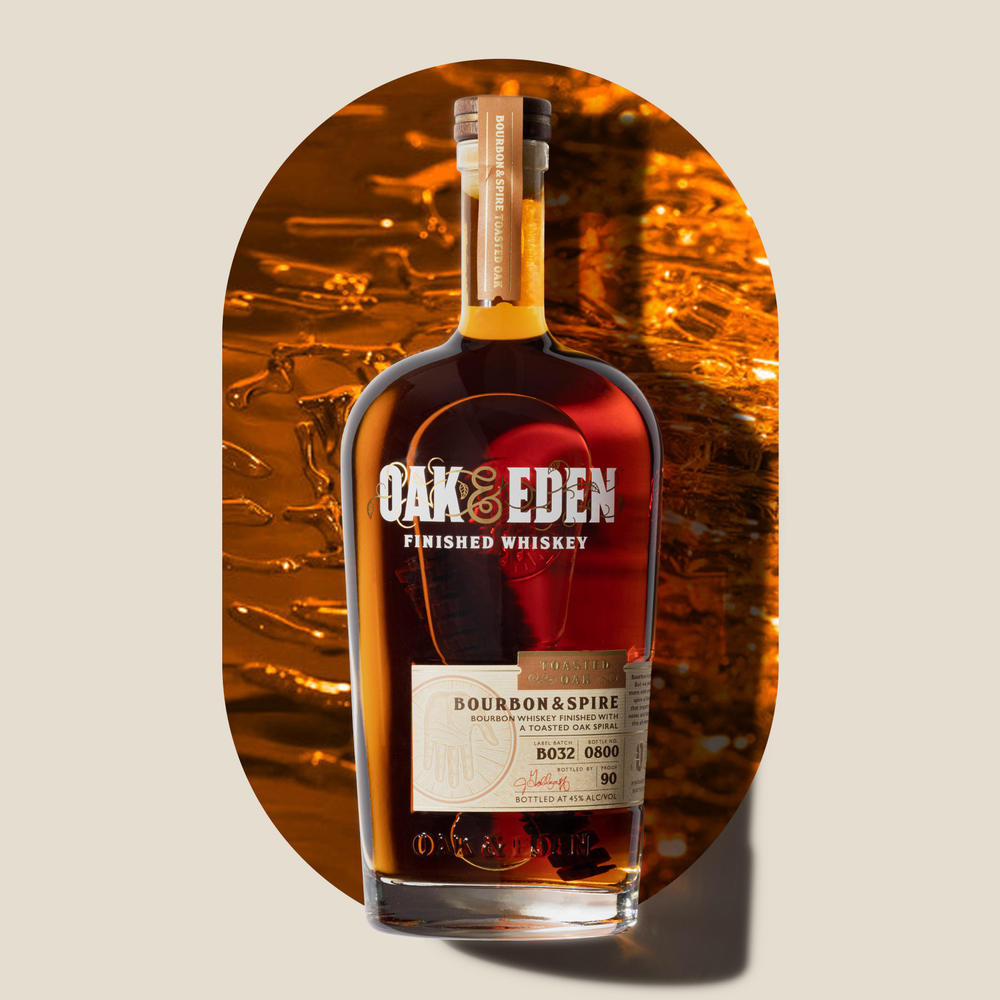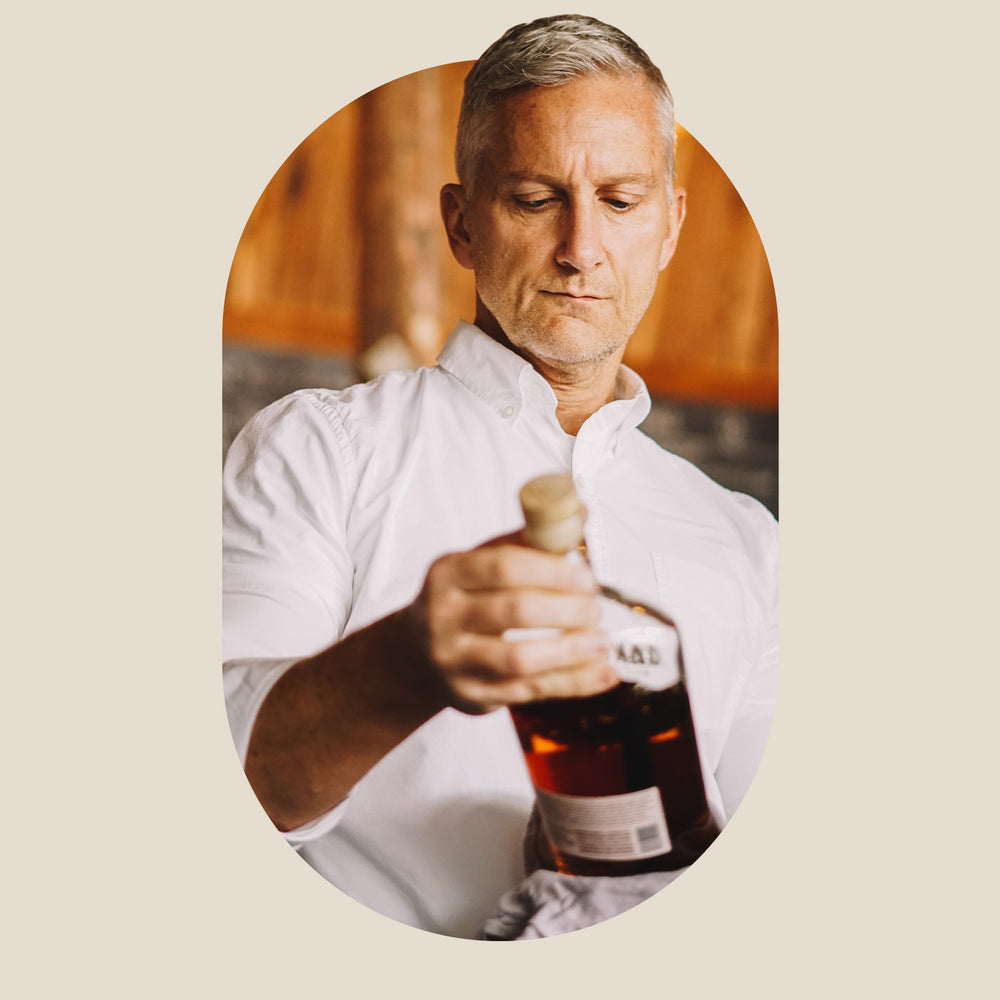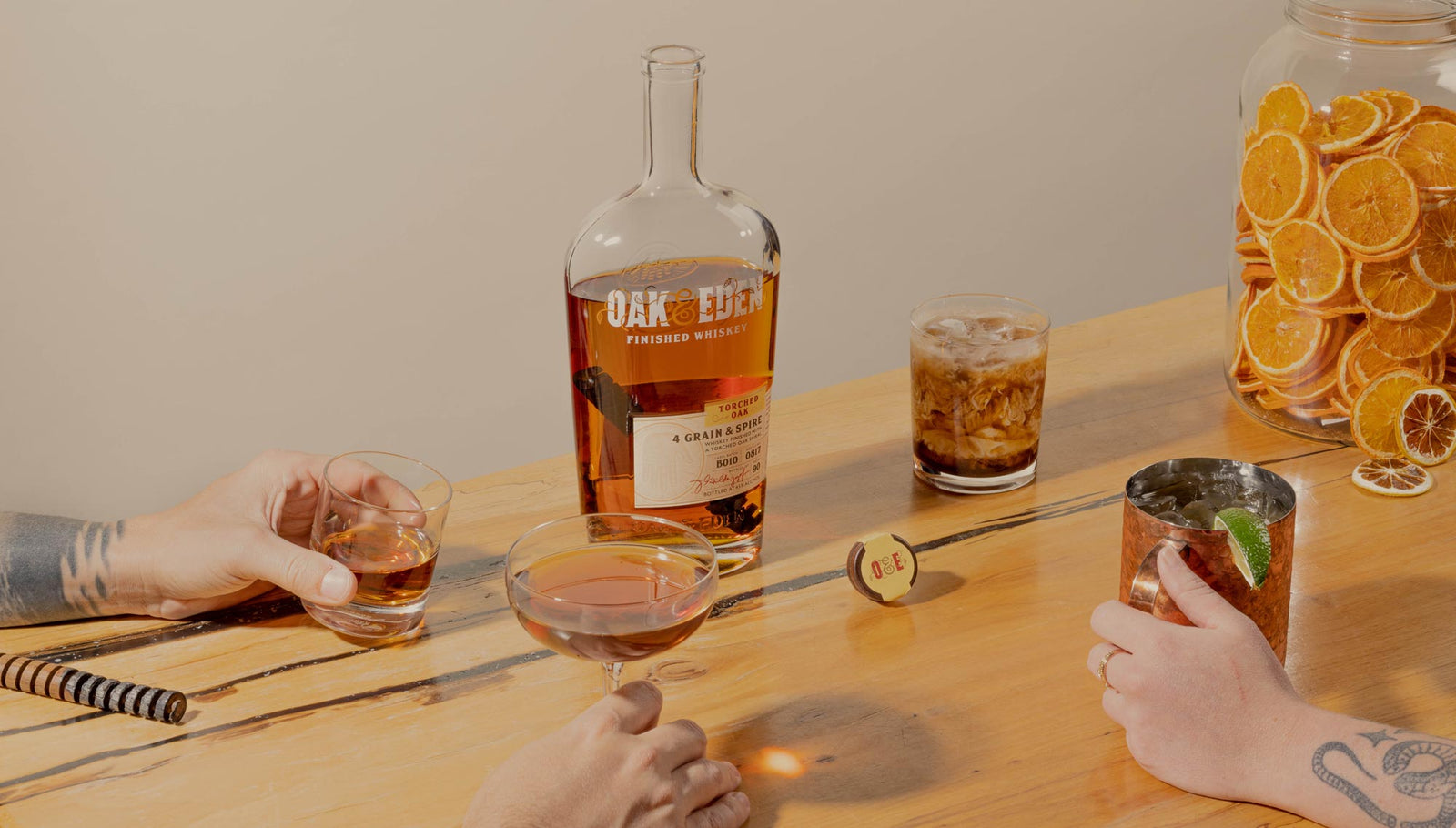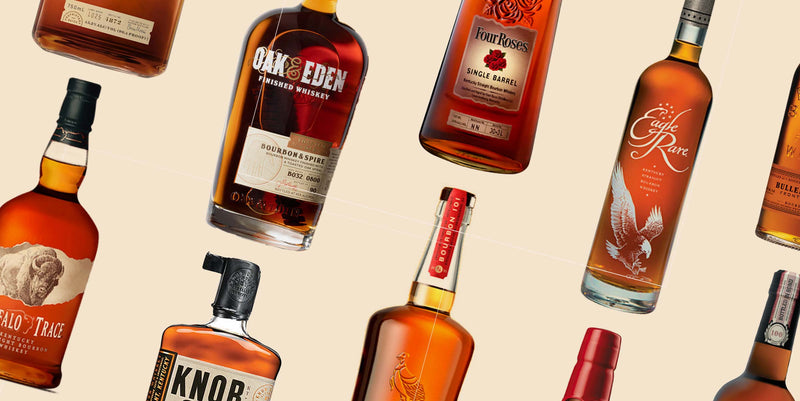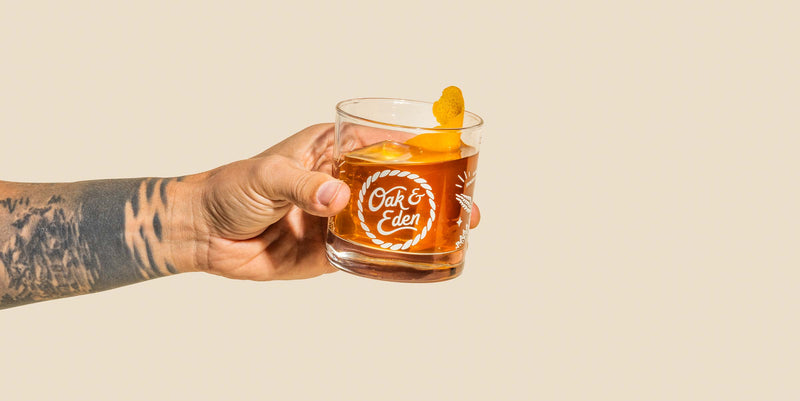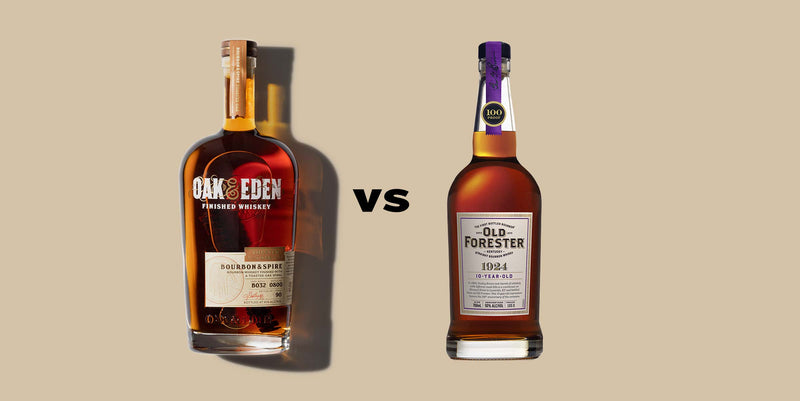What Is Whiskey? What You Should Know
There are usually a few bottles of different whiskeys from different distilleries at every bar.
Whiskey is one of the five core liquors — vodka, gin, rum, tequila, and whiskey — which are the most popular liquors globally. But beyond that, do you really know what whiskey is? Sure, it’s alcohol, but what’s in it?
Whether you have never had a sip of whiskey in your life and are looking to get into it, or you are a seasoned whiskey sipping expert, you might be surprised just how much about whiskey you didn’t know.
Here are a couple of the essential facts about whiskey that you should know to best enjoy this delicious spirit.
Whiskey: The Basics
There are dozens of different varieties of whiskey that are all distinct regional creations that have unique tastes, flavors, production techniques, and histories. A few examples of common whiskey nomenclature include:
- Single-malt whiskey or single distillery whiskey
- Canadian whiskey
- Scottish whisky (Scotch)
- American whiskey (Bourbon)
- Irish Whiskey
- Corn whiskey
- Whiskey from Japan
- Whiskey cocktails like an old fashioned or whiskey sour
At its core, however, there are some things that all whiskey types share, no matter where they came from.
Whiskey is an amber to the brown-colored distilled spirit made from fermented grains of varying blends and varieties depending on local grains and tastes. This mash of cereal grains often includes some corn. Whiskey is hard liquor and usually has an alcohol content of about 40% ABV.
It’s typically distilled and then aged in wooden casks for some time before they are eventually bottled. This aging process is a major component of the flavors of each specific different kind of whiskey.
Each whiskey is unique in flavor, but common flavor notes across varieties of whiskey are warm, spicy, caramelly, nutty, woody, and toasty.
When Was Whiskey Invented?
The origin of whiskey holds plenty of its own clues about what whiskey has to offer and the flavors of whiskey around the globe.
The story of whiskey all starts with the discovery of the distillation process, which through the use of alternated boiling and condensation, produces a stronger alcoholic product. Distillation was first used in Mesopotamia as far back as 2000 B.C, making it over 4000 years old.
Distillation slowly spread throughout Greece and then Europe, where the process was used to distill everything from aromatics to drinking water to alcoholic beverages.
The first time that we see whiskey coming up is in the 1000s A.D., when monks in Scotland, unable to ferment alcoholic beverages from grapes, began fermenting grain mashes that would be distilled to become the first whiskies.
Whiskey was originally referred to as aqua vitae, Latin for the water of life, which eventually became known as whiskey. Distilleries became quite successful in Ireland and Scotland, and as Europeans immigrated to the United States, distilleries came with them.
Eventually, this led to the proliferation of distilleries in Kentucky and Tennessee, which produce some of the world's finest bourbons, ryes, and Tennessee whiskies.
What Are the Different Kinds of Whiskey?
There are many different kinds of whiskey, each with its own unique requirements, ingredients, styles, and flavors. Here is a little overview of what each kind of whiskey is.
Bourbon Whiskey
Bourbon is a type of whiskey that is uniquely American. There are several things that make a bourbon a bourbon, but first and foremost, all bourbon has to be made in the United States.
Rye Whiskey
Rye whiskey, unlike bourbon whiskey, does not have to be made in the United States of America. In fact, rye whiskey is very popular in Canada in addition to the United States. Rye whiskey uses a mash bill of at least 51% rye. This gives rye its distinctive, spicy flavor profile that people love.
Tennessee Whiskey
Tennessee whiskey is much like bourbon whiskey, except Tennessee whiskey must be made in the state of Tennessee. Tennessee whiskey must use a Maysville with at least 51% corn and must also go through a special charcoal maturation process that mellows the flavors in the whiskey.
A prime example of this type of whiskey is Jack Daniel’s.
Scotch Whisky
Scotland was one of the first places in the world to produce whiskey.
Scotch whiskies are typically malt whiskies, meaning they are made using mostly malted barley in the mash bill. Scotch whiskies must also be made in Scotland as well as be aged for a minimum of three years also in Scotland.
Irish Whiskey
Jameson is the most famous of the Irish whiskies around the globe, and while they may be similar to Scotch, they are distinct. Irish whiskey, also known as Gaelic whiskey, is made with barley (typically unmalted). This gives Irish whiskey its smoothness and removes some of the smokiness that Scotch whiskey is famous for.
Japanese Whisky
Japanese whisky is a newcomer to the global whisky world, and it is spelled without the “e,” just like Scotch. Japanese whisky is based on Scotch, using manly malted barley, often imported from Scotland.
Japanese whisky uses the same distillation method as Scotch and is then aged in American wood, Japanese wood, or Sherry casks, which give Japanese whiskey its unique flavors like citrus and incense.
How Is Whiskey Made?
The process of whiskey is a long and complicated process, but one that takes us from simple grains to one of the finest beverages in the world. Here is an inside look at each step of the process one by one.
Pickling and Fermenting the Grains
Every great whiskey starts with different types of grains like wheat, barley, corn, and rye, which are carefully selected and combined in precise proportions to create the fermented mash bill, the recipe for the grains.
These grains then have to be mashed for them to release the sugars, which is done by grinding the grains and combining them with hot water in a tank and then stirring and mixing. Once the grains have released their sugars, and the mixture has thickened, it is ready for fermentation.
In a fermentation tank, yeast is introduced to the mash, which is then left to ferment for a few days before it is ready to move on. The fermentation process depends on the strain of yeast and the grains used.
After the fermentation period is over, the distiller has a beer-like liquid between 7-10% ABV, often referred to as distillers beer.
The Distillation Process
Now the fermented grain mash liquid or distilled beer is ready for the distillation process. The distillation process is used to increase the volume of alcohol in something. There are a few different distillation methods, but all are based on evaporating and condensing liquids to remove impurities and unwanted items.
Pot Still Distillation
Pot still distillation is one of the popular whiskey-making methods for malt whiskeys, which are whiskies made with malted barley. The malting process replaces the mashing process for malted whiskies. But Bourbons and other grain whiskies do not go through pot distillation.
In a post still, the distiller's beer is put in a still, a large metal pot, where it is heated to boil. Since alcohol has a lower boiling point than water, it evaporates quickly, and the gasses that rise off the boiling distiller's beer rise up into a tube that carries this gas into the second still, where it is condensed back into a liquid.
The resulting liquid comes out at about 20% ABV, so the process is then repeated two more times to reach a final product that is typically around 60-70% ABV.
Column Distillation
Column distillation is the other common distillation process for whiskies and is the primary process for grain whiskies like bourbon, rye, and corn whiskies. Unlike pot stills which have to go through a batch process, column stills work continuously to the final product.
The distiller’s mash is fed into the column still, where it is heated with hot water vapor, which causes the alcohol vapors to rise up the column. As the vapor rises, it repeatedly hits alternating metal plates in the column, which condense the vapors.
Then, the rising steam, which is still being fed through the column, heats the liquid again, as it constantly condenses and evaporates over and over up the column, where it eventually reaches a tube connecting it to the condenser which leaves the final distilled spirit.
Column stills are capable of very high distillation percentages, as high as 95%, although when distilling alcohol for consumption, they are not usually set to go that high.
The Aging Process of Whiskey
After distillation has been completed, the longest step of the process comes into play: aging. Much of whiskey's color, flavor, and aroma comes from the aging process rather than the distillation process.
The aging process is where many of the rules and regulations surrounding different designations of whiskey are located. For bourbon, rye, and other American whiskies, the rules stipulate the use of new, charred oak barrels for the aging process.
In other countries and styles, different distillers may use different woods and barrels that have previously been used for other purposes to create distinct flavor profiles and aromas for their own tastes.
During the aging process, the wood is porous and imparts its flavor profiles, terpenes, and oils into the liquid, giving it both color and flavor.
The Bottling Process of Whiskey
From there, your favorite whiskey is then bottled with at least 40% ABV and sealed for consumption later. Depending on the distiller and the run of whiskey, several barrels are usually combined in one bottling.
If only a single barrel is used in a bottle, then it is labeled as a single barrel or single cask whiskey.
What Is Finished Whiskey?
Many whiskeys are aged in just one barrel over the duration of the aging product. But other whiskies change barrels during the aging process, where the whiskey is “finished” with flavors from another wood.
Finished whiskey is a way that distillers can add additional flavors and elements to their whiskies, depending on what flavor profile they want the whiskey to have. These finished whiskies can be more complex and varied than traditional single-barrel whiskey.
What Is In-Bottle Finishing?
In most whiskies, bottling is the final step of whiskey production, and from here, the bottle is sold and consumed. But for Oak & Eden whiskey, the process isn’t quite finished. We use a process that we invented called in-bottle finishing.
In every bottle of Oak & Whiskey, you will find one of our specially designed wooden spires, designed for maximum surface area. This spire continues to flavor and finish your whiskey in the bottle, so it continues to improve and develop new flavors as it continues to rest in the bottle.
Unlike a second barrel finishing, our in-bottle process allows the whiskey to receive its finishing notes in the bottle itself. The longer you have the bottle, the longer the flavors of the spire will have to infuse the whiskey with the subtle flavor notes that Oak & Eden whiskies offer.
What Is Whiskey? The Takeaways
Whiskey is a varied and diverse spirit with many different varieties and regional tastes and flavors that go into them. At its core, whiskey is a distilled grain spirit, typically made from corn, barley, wheat, and rye, which is then aged in wooden barrels.
Whiskey is noted for its caramel and vanilla notes and flavors, as well as the woody and warm flavors common in whiskey. Whiskey is made through a process beginning with selecting the grain mash, fermenting the grains, distilling, and then aging and bottling the spirit when it is complete.
There are many different specific types of regional whiskey styles, from bourbon whiskey, rye whiskey, Irish whiskey, Scotch whisky, Japanese whisky, and Tennessee whiskey.
Oak & Eden offers bourbon, rye, and wheat whiskies that you are bound to love. Our whiskies use a technique called in-bottle finishing to get the finest flavors and aromas out of your whiskey. If you have never tried a finished whiskey before, we promise you are going to love it.
Sources:
Japanese Whisky: The Origin Story | Whiskey Culture

